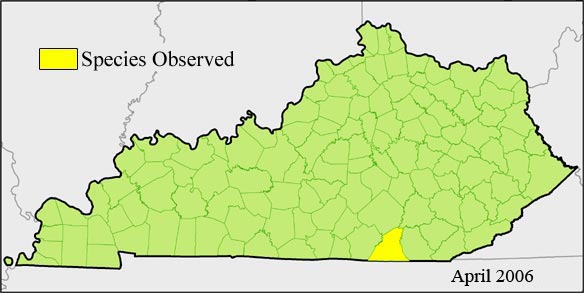P�h�o�t�o� �b�y� �K�S�N�P�C� �S�t�a�f�f�
|
Habitat:
Shaded, fine grain sandy ledges and rockhouses.
|
Species Description:
Plant a delicate, strongly tufted, smooth, herbaceous perennial, forming small clusters of stems, from slender taproots, with short basal offshoots; 1-1.5 dm tall. Stems round, smooth, leafy in upper part of stem. Leaves simple, opposite, entire; 1.2-4 cm by 2.5 mm, bright green on both sides. Flowers white, regularly 5-parted, usually solitary or 2-3 at stem tips, on long stalks, blooming from early July through August. Fruit a broadly ovoid capsule, 2.5-3.7 mm long, with 3-4 valves, releasing reddish-brown seeds.
|
Phenology:
Flowering Period: Early June to late June.
|
Additional Information at NatureServe
|
Diagnostic Characteristics:
This Sandwort resembles two others, M. glabra and M. groenlandica. The former blooms in the Spring, the latter is only found at high elevations in the Blue Ridge; Cumberland sandwort can be distinguished from these others by its longer, broader, thinner, veinier leaves, its leafier upper stems with fewer flowers, distinctive seed-coat network, its summer flowering time, and its distinctive, limited distribution, and shaded habitat.
|
Management:
Timber removal would be detrimental. Exotic pest plants are a threat to this species and should be removed. Avoid creating access to the site through trail or road construction.
|
Global Range:
Occurs in four Tennessee counties- Fortress, Morgan, Pickett, and Scott, in the Cumberland Plateau, and at one site in Kentucky.
|
Known Kentucky Occurrences:

|